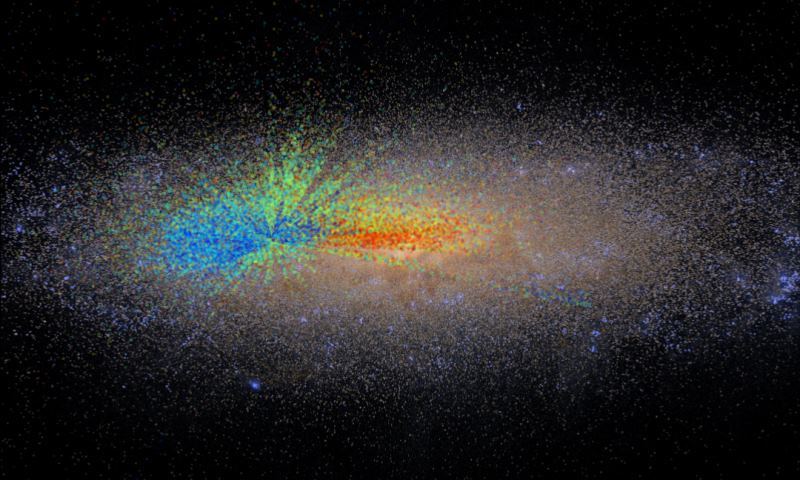American astronomers have created an "age" map of our galaxy

When you click, the photo will open in full size
In the Universe - billions of galaxies, but man has studied one of them best. It is about our own galaxy, inside of which (a bit on the periphery) the Solar system is located. Scientists from the American astronomical community recently presented an "age" map of the Milky Way. Stars of different ages are marked on it with different colors. The total number of objects on the map is 70 thousand elements. Thanks to this work, it is now possible to trace the evolution of the galaxy, from infancy to an adult spiral state.
“Closer to the center of our galaxy, we see old stars that formed when the Milky Way was young and small in size. A little further we see young stars. And we can conclude that our galaxy is growing, ”says one of the authors of the study.
Of course, far from all the Milky Way objects were on the map . Scientists have mapped the galaxy, noting the red giants, bright stars that are at the final stage of their development. They are not so difficult to observe from Earth. “If we know the mass of the red giant, we can find out the age of the star using a“ thermonuclear clock, ”says Marie Martig, another member of the team. “Determining the masses of the red giants is a difficult task, but we got new, revolutionary methods that made this possible,” Martig adds.
The team began work using data from Sloan Digital Sky Survey(SDSS, Sloan Digital Sky View). This is a large-scale exploration project for images and spectra of stars and galaxies using a 2.5-meter wide-angle telescope at the Apache Point Observatory in New Mexico. The project is named after the Alfred Sloan Foundation. In particular, scientists used information from the APOGEE project (APO Galactic Evolution Experiment). Here, experts use high-resolution, low-noise infrared spectroscopy to observe the interior of the galaxy hidden by cosmic dust. APOGEE explores about 100 thousand red giants. APOGEE allowed more than a hundred times increase the number of stars for which high-precision IR spectra are known (resolution R ~ 20,000 at λ ~ 1.6 μm, singal-noise S / N ~ 100). APOGEE collected data from 2011 to 2014.
It is impossible to determine the age of a star only by spectrum. Therefore, it was necessary to take also the data from the Kepler telescope, accumulated over the past years. After that, it became possible to characterize the star both in terms of spectrum and wavelength, subsequently determining the age of the star.
Thanks to the new map, as mentioned above, scientists were able to track the evolution of our galaxy, as well as other similar galaxies in the universe. A map of similar accuracy and scale is the first in the history of astronomy.
